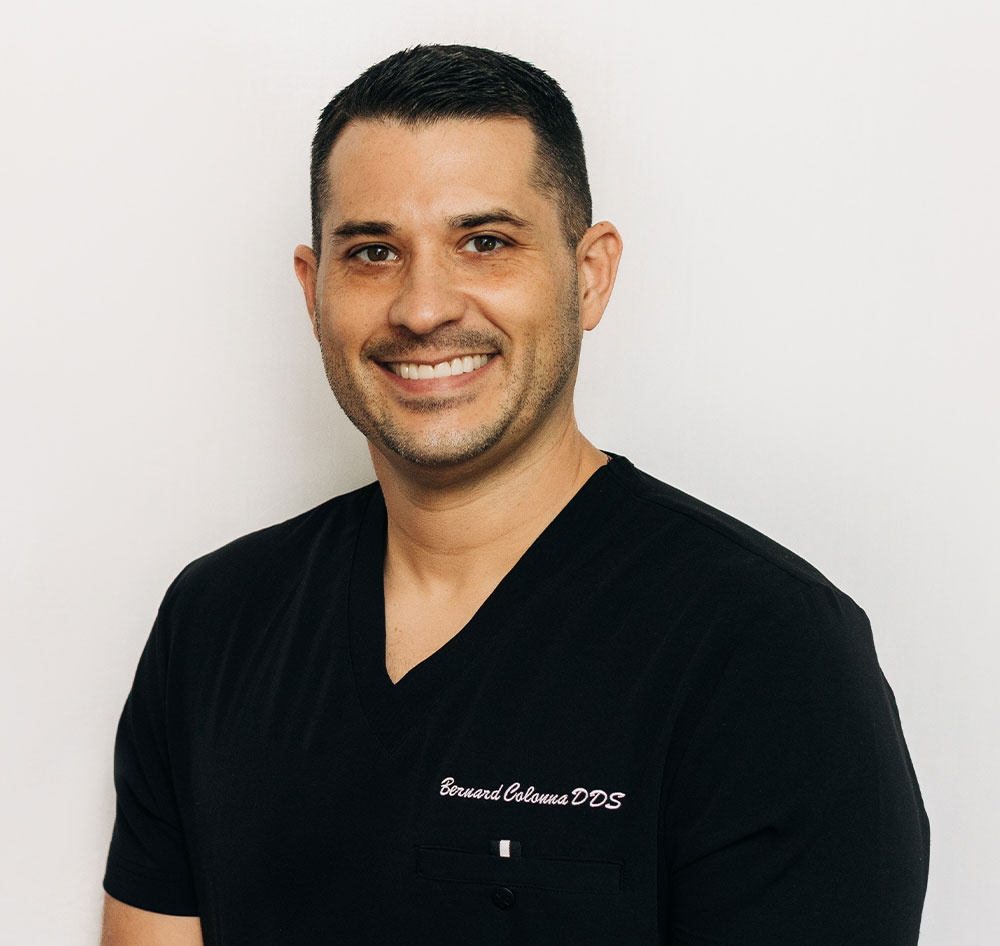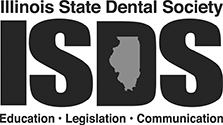Extractions
Tooth Extractions: What to Expect

Tooth extraction is a dental procedure that removes a tooth from its socket in the jawbone. While tooth extraction may seem intimidating, it is commonly performed by Amedeo and Colonna, LTD to address various dental issues. Understanding what to expect during a tooth extraction can help alleviate your apprehension or concerns. Count on Amedeo and Colonna, LTD in Park Ridge to make you comfortable with all your oral hygiene needs.
Understanding Tooth Extraction
Tooth extraction, or tooth removal, is performed by dentists or oral surgeons at Amedeo and Colonna, LTD. There are two types: simple extraction and surgical extraction.
Simple extraction involves removing a visible tooth using forceps. It’s a quick and straightforward procedure done under local anesthesia.
Surgical extraction is more complex and necessary for impacted teeth that don’t fully emerge or grow misaligned. It requires an incision in the gum tissue and may involve removing a small portion of bone. General anesthesia or sedation may be used for patient comfort.
Common Reasons for Tooth Extraction
Tooth extraction may be necessary for various reasons, including wisdom teeth that cause pain and infection due to lack of space. Severe gum disease can also require extraction to restore oral health and prevent further infection. Extensive tooth decay that cannot be treated with fillings or root canal therapy may necessitate extraction. In orthodontic treatment, tooth extraction can create space and enable proper alignment with braces or aligner therapy.
Pre-extraction Preparations
Before a tooth extraction, certain preparations are necessary to ensure a safe and successful procedure. At Amedeo and Colonna, LTD in Park Ridge, these preparations include reviewing your medical history, anesthesia considerations, and dietary guidelines.
Medical History Review and Consultation
Before a tooth extraction, Amedeo and Colonna, LTD will review your medical history to assess any health conditions, medications, or risk factors. They will also evaluate your blood pressure and overall health to determine the potential for complications.
Openly communicating any medical conditions, medications, or allergies during the consultation is crucial. This information helps the professionals at Amedeo and Colonna, LTD make informed decisions about anesthesia, pain management, and necessary precautions for a safe extraction.
Preparing for Anesthesia
To minimize discomfort, local anesthesia may be administered. In complex cases, general anesthesia or sedation may be required. Amedeo and Colonna, LTD will discuss anesthesia options, effects, and risks before the procedure.
If you receive local anesthesia, follow specific dietary guidelines to maximize its effectiveness. A saltwater mouth rinse with warm water and a teaspoon of salt can help maintain oral health before the extraction.
Dietary Guidelines Before Surgery
Before a tooth extraction, Amedeo and Colonna, LTD may provide dietary guidelines to reduce complications. You may need to refrain from eating or drinking for a specified period. Clear liquids like water and apple juice may be allowed up to a certain time before the procedure. Adhering closely to these guidelines ensures a smooth extraction process.
The Tooth Extraction Procedure
Now that you understand the preparations, let’s look at the tooth extraction procedure. From the steps involved in extraction to managing anxiety during the procedure, we will cover all aspects of a tooth extraction.
Steps involved in Tooth Extraction
The tooth extraction process involves several steps to remove the tooth safely. First, Amedeo and Colonna, LTD will numb the extraction site with local anesthesia to prevent pain and keep you relaxed. With forceps, the tooth is loosened by gently rocking it back and forth, widening the tooth socket for easier removal. A dental elevator lifts the tooth from its socket, applying controlled pressure to minimize tissue trauma.
After extraction, gauze is placed over the site and you’re instructed to bite down gently. The gauze controls bleeding and promotes blood clot formation for healing. If there was a surgical incision, dissolvable stitches may close the gum tissue, which won’t require removal.
Dealing with Anxiety during the Procedure
If you have dental anxiety, don’t worry! The professionals at Amedeo and Colonna, LTD are equipped to help you manage your anxiety during a tooth extraction. By communicating your fears and concerns, Amedeo and Colonna, LTD can develop a sedation plan if needed, ensuring you feel comfortable and relaxed throughout the procedure.
With the gentle approach and reassurance from our experts, your tooth extraction will be a comfortable experience.
Post-extraction Aftercare
After a tooth extraction, proper aftercare is essential for healing and preventing complications.
Immediate Care after Tooth Extraction
To promote healing and minimize discomfort after a tooth extraction, you’ll be asked to gently bite down on the gauze over the extraction site to control bleeding. You can also apply an ice pack wrapped in a cloth to reduce swelling for 15 minutes at a time, with breaks, during the first 24 hours.
It will be important to rest and avoid strenuous activities to allow your body to heal. Stick to lukewarm or cool foods and drinks, avoiding hot ones that can disrupt the blood clot in the socket. Expect some pain and take over-the-counter pain medications like ibuprofen as directed. Avoid aspirin as it can increase bleeding risk.
Oral Hygiene Practices
Proper oral hygiene is crucial for healing and preventing complications after a tooth extraction. Rinse your mouth gently with a saltwater solution a few times daily, starting the day after extraction. Use a teaspoon of salt dissolved in warm water and swish it around, avoiding forceful spitting.
Brush your teeth gently, avoiding the extraction site, for the first couple of days. Afterward, resume normal brushing but be cautious around the extraction area. Avoid mouthwash with high alcohol content as it can irritate the extraction site. Do not floss near the extraction site until approved by your dentist. Continue flossing other teeth to maintain overall oral health.
Dietary Adjustments
To aid in the healing process and minimize discomfort after a tooth extraction, stick to soft foods like yogurt, mashed potatoes, scrambled eggs, soups, and smoothies for the first few days. Avoid crunchy or hard foods such as popcorn, nuts, chips, and anything that requires excessive chewing.
Stay hydrated by drinking plenty of water. Include cooked vegetables, soft fruits, and protein shakes in your diet. Avoid spicy, hot, or acidic foods and opt for lukewarm or mildly warm options. Soothe the extraction site with cold, soft foods like yogurt or ice cream, but avoid extremely cold foods to prevent sensitivity.
Healing and Recovery Process
The healing and recovery process after a tooth extraction is an important phase of your dental care journey. Understanding what to expect during this time can help you monitor your progress and identify any potential complications.
What to Expect During Healing
After a tooth extraction, a small blood clot forms in the socket to indicate the start of the healing process. This clot protects the extraction site and promotes tissue healing. During healing, you may have minor bleeding or discomfort, which is normal. The extraction site gradually fills with new tissue, and the blood clot turns into a thin film, signifying progress. It’s important to note that mild odor is normal during healing, but severe pain, persistent bleeding, or an unusual smell should be evaluated by your dentist.
Average Recovery Time
The recovery time after a tooth extraction differs for each person. Typically, it takes 7-10 days for the extraction site to fully heal. However, complete healing of the site and surrounding gums may take a few weeks.
Swelling and discomfort gradually decrease during the recovery period. It is important to follow post-extraction care instructions for a smooth healing process.
Is Tooth Extraction the Only Solution?
Tooth extraction is not always the only solution. The experts at Amedeo and Colonna, LTD will explore alternative treatments before recommending extraction. Root canal therapy, dental fillings, and crowns are among the options they may consider.
In some cases, extraction is necessary to prevent complications like infection or overcrowding, particularly with permanent teeth or when braces are needed for alignment. You can count on our experts to assess your dental health and recommend the best treatment option.
Schedule a consultation today
Tooth extractions are common dental procedures that may be necessary for various reasons, such as tooth decay, gum disease, or overcrowding. It is important to understand what to expect before, during, and after the procedure.
Pre-extraction preparations involve reviewing your medical history, discussing anesthesia options, and following dietary guidelines. During the procedure, steps are taken to ensure a safe and comfortable experience, including managing anxiety. Post-extraction aftercare involves immediate care, oral hygiene practices, and dietary adjustments. The healing and recovery process varies for each individual, but it is important to follow instructions provided by Amedeo and Colonna, LTD.
Remember, tooth extraction is not the only solution, and discussing alternatives with the professionals at Amedeo and Colonna, LTD is always recommended.

 Dr. Colonna
Dr. Colonna Dr. Maloney
Dr. Maloney Meet the Team
Meet the Team



